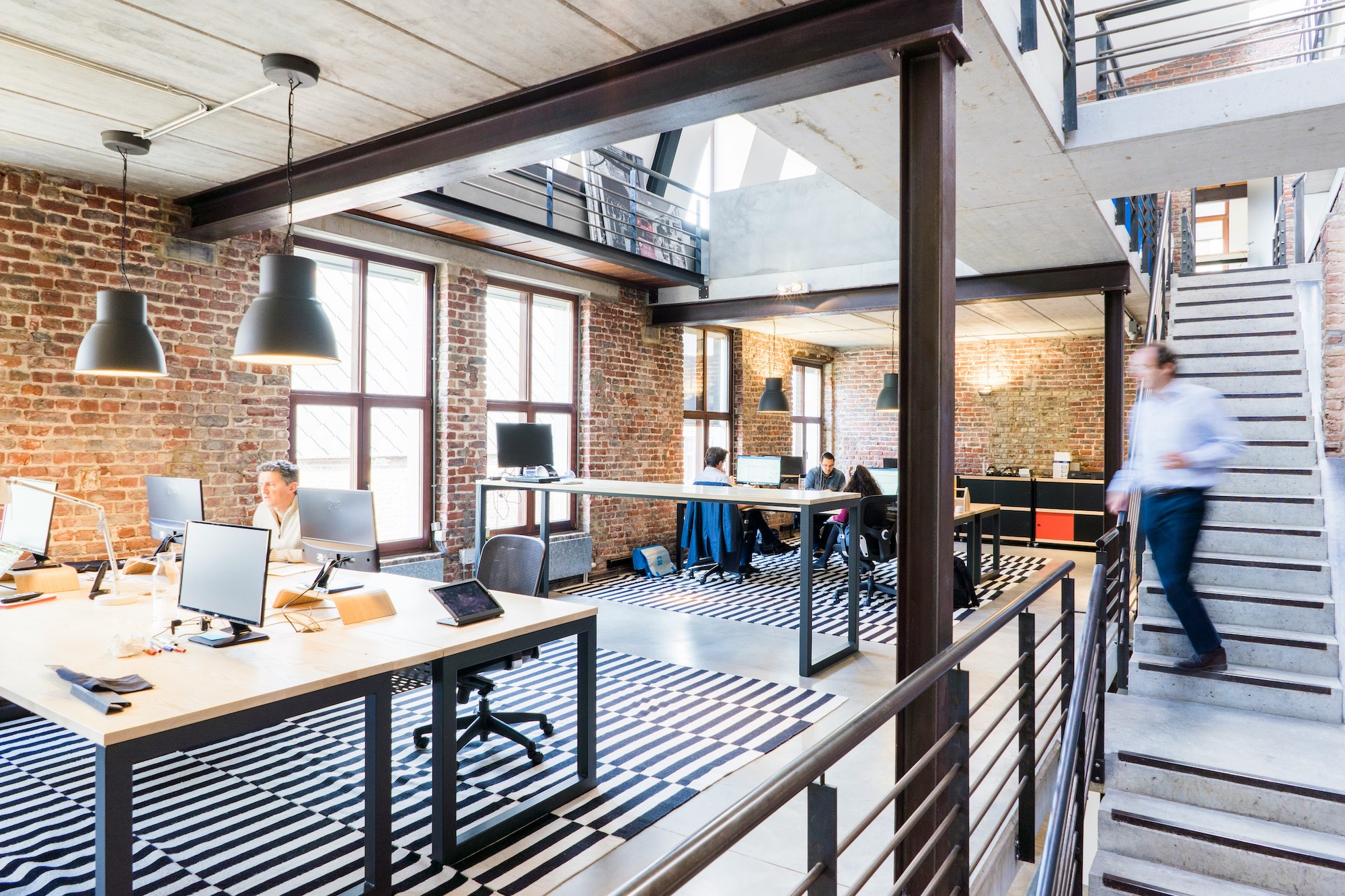We hope that Covid-19 will not always be with us, but its effects – predominantly the acceleration of existing pre-pandemic trends – will have long lasting impacts on the way we live and work. Millions of employees now argue that they can work just as efficiently from home, without the tedium and expense of the commute. While financial hubs inLondon temporarily plunge to less than 10 per cent of their pre-pandemic footfall and occupancy, many market towns are thriving as commuters spend their money locally, and online shopping is booming.
Commercial real estate, and particularly office space, is in a state of flux and its future function is already being considered by those both in and outside of the industry. “The virus has already been seen to fast-track the modernisation of the workplace,” saysLuke Power, Chartered Surveyor at Spring4. “Whilst presenting clear and identifiable challenges, this could signal an exciting new chapter in the industry for those who foresee and embrace modernisation.”
The pandemic has fundamentally changed social contracts not only between governments and their citizens, but also between businesses and their employees, customers and business partners
A hybrid office solution
Prior to the pandemic, many employers had already discovered that it was easier to retain staff – among them, working mothers – if they offered greater flexibility to work from home. Cloud technology, smartphones and increasingly robust internet connections allowed coders and designers, who often prefer a quieter environment, to embrace remote working. Meanwhile, senior staff and the new recruits they manage and mentor, and client-facing sales teams who are fuelled by conversation and collaboration, often need a dynamic corporate hub to thrive.
The national lockdown this spring exposed both the advantages and substantial downsides of home working and demonstrated that for many, the office is vital for productivity, learning, mental health and career development. Andy Haldane, chief economist to the Bank of England, warned in an online speech that working from home is damaging Britain’s creative potential and could harm personal wellbeing and the economy if it is maintained long after the coronavirus pandemic has receded.
As the country experiences a second wave of infections and lockdowns, many companies are now looking at a hybrid system: some workers coming into the office for two or three days a week and some not at all. Already, however, some employers have identified a problem with the hybrid system, with many staff preferring to come into the office midweek, and work from home on Mondays and Fridays.
Major tech companies have been particularly quick to adjust to the work-from-home revolution. At the start of the crisis, Google announced that it did not expect its employees back in the office this year. That return has now been pushed back to summer 2021. Not all Google employees are keen to work from home forever though. In a staff survey, 62% of Google employees expressed an interest in returning to the office part-time and the proportion of employees who wanted to stay working remotely for ever halved between May and July. Facebook has also said employees can work from home until next summer, but has warned that it will “adjust” salaries for staff who move away from expensive San Francisco to more affordable cities.
Nevertheless, it is clear that there will have to be a shift in the dynamic between employee and employer, with a focus on building trust. “The pandemic has fundamentally changed social contracts not only between governments and their citizens, but also between businesses and their employees, customers and business partners,” notes a blog post from management consultancy EY. “To rebuild trust, it will be critical for business to place humans at the centre of their response, and three key focus areas will drive progress in both gears: health and safety; technology; and physical space.”
Increasingly, people won’t come into the office to go through emails, because you can do that at home
Reduced footprints or workspace redesign?
Faced with financial uncertainty, we can be quite sure that most companies won’t be spending millions on retrofitting offices or doubling floor space to accommodate social distancing and that there will be fewer staff working on site at any given time.
“I’m working with a client that has 80 desks contained within 10,000 square feet,” says Hugh Stallard, Chairman of Spring4. “They now expect this to fall to 30 or 35 desks upon re-occupation of their offices.”
Managers are currently engaged in a reassessment of the whole function and purpose of the office. According to a survey of just under 1,000 companies by the Institute of Directors (IoD), 74 per cent plan on maintaining increased home working long-term.
“The emergence of Covid-19 has stimulated our business to think more widely about the future of the traditional office environment,” says David Rowley, CEO of medical communications practice OPEN Health, client of Spring4. “We are actively seeking opportunities within our existing real estate portfolio to restructure the way in which the business operates. Determining the optimal balance between working from home and office-based collaboration will be fundamental to how our business operates moving forward.”
Many companies will fundamentally change the way in which they work and how they physically occupy space. “Increasingly, people won’t come into the office to go through emails, because you can do that at home,” explains Daniel Tabatabai, Project Manager at Spring4. “People will be coming in to collaborate. We’ll likely see a movement towards increased meeting room provision and break-out areas.”
As we emerge from the pandemic, many companies will look to sub-let part of their offices, and many more will be searching for temporary workspace solutions before they commit to somewhere more long-term
Flexible Spaces and Leases
With this dramatic shift on the horizon, landlords – who have enjoyed a decade of prosperity – will need to be more inventive and creative with respect to both lease terms and office fit-outs. The evolving role of the office will see increased demand for more flexible deals, shorter initial lease commitments and occupiers placing far greater emphasis on smaller, more efficient but ultimately higher quality office spaces.
As we emerge from the pandemic, many companies will look to sub-let part of their offices, and many more will be searching for temporary workspace solutions before they commit to somewhere more long-term.
“In the immediate aftermath of Covid-19, serviced office providers experienced a mass exodus of tenants who had the ability to terminate flexible contracts with almost immediate effect,” says Power. “But now, we are working with various clients who are turning to serviced offices as a flexible solution whilst they consider long term office strategies and solutions. It is a rapidly developing situation.”
As supply and demand continue to evolve, there is a rapidly emerging ‘grey market’ of ex-tenant sublet space, in addition to smaller, ‘turnkey’ spaces with high-quality facilities and bespoke fit-outs being offered directly by landlords. These offices would no longer have the gravitas or importance of a company HQ and could simply serve as another spoke in a network of regional hubs. The transport infrastructure of the UK is likely to support London remaining a central hub, however, simply because so much of the national train network converges at the capital.
The office will remain a vital part of the infrastructure of most companies, not least in order to maintain and reinforce a tangible corporate identity. It is important for collaboration, inspiration and forging the critical relationship between management and staff - successful team members want to feel part of something ‘real’. But its evolution and modernisation, which is a trend we have seen happening for years, has undoubtedly been accelerated by Covid-19. The pandemic will eventually fade, but it will leave behind a fundamental shift in the dynamic between the workspace and the worker. The office of the future will have to reflect this change which is being driven by innovative occupiers making considered and creative real estate decisions with the help of their advisors.





















.png)